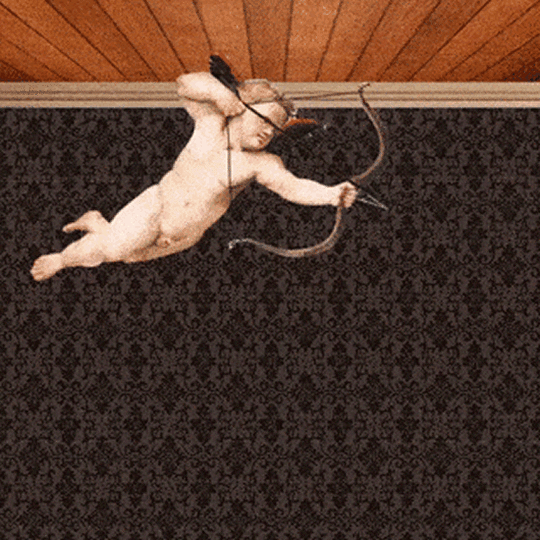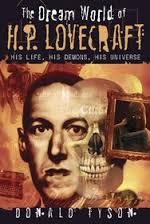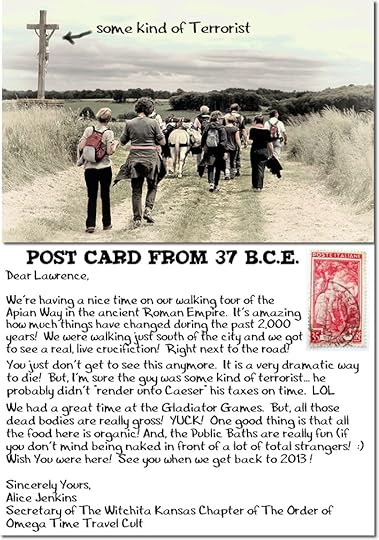Lawrence R. Spencer's Blog, page 163
May 30, 2021
HAPPY SMOKE AND FIRE
Republished by Blog Post Promoter
Just to illustrate the degree of biodiversity loss we’re facing, let’s take you through one analysis…
The rapid loss of species we are seeing today is estimated by experts to be between 1,000 and 10,000 times higher than the natural extinction rate.*
These experts calculate that between 0.01 and 0.1% of all species will become extinct each year.
If the low estimate of the number of species out there is true – i.e. that there are around 2 million different species on our planet** – then that means between 200 and 2,000 extinctions occur every year.
But if the upper estimate of species numbers is true – that there are 100 million different species co-existing with us on our planet – then between 10,000 and 100,000 species are becoming extinct each year.
Unlike the mass extinction events of geological history, the current extinction challenge is one for which a single species – ours – appears to be almost wholly responsible.
May 29, 2021
YOUR STORY
Republished by Blog Post Promoter
 “You are what exists before all stories. You are what remains when the story is understood.”~ Bryon Katie ~
“You are what exists before all stories. You are what remains when the story is understood.”~ Bryon Katie ~(image: dusteramaranth)
WHAT YOUR TAX DOLLARS BUY
Republished by Blog Post Promoter
This animated GIF shows the destruction caused by an atomic bomb in 2.3 seconds.
What kind of demented psychopathic fucks would spend YOUR TAX DOLLARS to build weapons like this?
THE SAME PEOPLE THAT YOU ELECTED TO RUN YOUR GOVERNMENT!
WTF ARE YOU THINKING?!
THE OZ FACTORS: NEW AUDIOBOOK AVAILABLE NOW
Republished by Blog Post Promoter
Listen to a Sample:The Oz Factors: The Wizard of Oz as an Analogy to the Mysteries of Life

Our humanity has long since been exceeded by the power of the wicked witches of science and government to destroy all life with nuclear weapons, alter our DNA and control our minds with psychotropic drugs and our lives with media lies.
Our thoughts and conjectures about life and the universe are often based on assumptions, unproven theories, hearsay, rumors and misinformation. Decisions we make in life may be based on ancient attitudes and archaic practices.
There are 12 common denominators that prevent observation, understanding, and workable solutions to problems of existence. How do each of these ‘Oz Factors’ influence our history, science, philosophy, our lives and our future?
We can chose our own Yellow Brick Road. We can pull back the curtain of rhetoric and dogma. We can build a better Emerald City for ourselves and our children.
Do you really want to go back to Kansas?
http://www.audible.com/pd/ref=sr_1_1?asin=B00B25HTUQ&qid=1358802443&sr=1-1
May 28, 2021
WITCHES’ SABBATH
Republished by Blog Post Promoter
Friday is named for Frigga, the free-spirited goddess of love and fertility. When Norse and Germanic tribes converted to Christianity, Frigga was banished in shame to a mountaintop and labeled a witch. It was believed that every Friday, the spiteful goddess convened a meeting with eleven other witches, plus the devil — a gathering of thirteen — and plotted ill turns of fate for the coming week. Friday was known as “Witches’ Sabbath. Thus, Friday, The 13th is an “unlucky” day …for Christians….LOVE SPRAY
Republished by Blog Post Promoter
IF YOU EVER FEEL LIKE YOU’RE “FALLING IN LOVE” DON’T BE FOOLED BY THE INTENSE EMOTIONS OF LUST, YEARNING, LONGING, DESIRE, ETC.. THESE ARE PREPROGRAMMED MECHANISMS THAT CAN DESTROY YOUR MIND AND YOUR LIFE. QUICKLY ELIMINATE THE MENACE WITH A CAN OF “LOVE SPRAY” AIMED DIRECTLY IN THE FACE OF “CUPID”.

May 27, 2021
The Secret of Oz: Global Economics 101
Republished by Blog Post Promoter
The Secret of Oz – The History of Money. HOW TO HANDLE PROBLEMS CREATED BY PRIVATE BANKS
A LETTER FROM MR. HOLMES TO H.P. LOVECRAFT
Republished by Blog Post Promoter
[image error]“It is my observation that immortality is a state of spiritual existence that is native to all beings, regardless of whether or not that being currently inhabits a body. A body is a only a temporary vehicle through which spirits may tour the physical universe and enjoy the sensations and adventures provided therein. Factually, the spirit enters into a body, animates the body, and departs from the body when it becomes injured, diseased or spent.
Most beings will forget about that body when it is gone, and will also forget the identity and activities of that body – out of sight, out of mind. However, I have discovered that many persons do not lose awareness of themselves between the lives of bodies they have inhabited. Through mental discipline one may overcome the common affliction of Western men to deny and forget the spiritual essence of themselves.
This forgetfulness is a disease of the soul created and maintained by stupid brutes who are compelled to dominate and control their fellow beings. They have long since lost themselves, and seek only to ensure that their disability is inflicted upon everyone. Their greatest fear is that another being may inflict pain upon them, just as they desire to inflict pain upon others.
Immortality is not sustained by a desire for revenge against the real or imagined wrongs which have been, or may be, caused by others. Immortality is realized through loving oneself and loving others as you love yourself. The possession of a body is not a factor in love or immortality.
I have learned that certain Eastern sages, and their devote disciples, have learned methods of mental and spiritual discipline that enable them to identify themselves spiritually, and maintain a constant awareness of that identity from the lifetime of one body to the next and to the next, ad infinitum. Ultimately, one may choose to inhabit a body, or not, at will.

Existence as a disembodied spiritual being is sometimes observed and acknowledged by people. They are called ghosts, or angels, or demons, or saints or poltergeists, or gods – depending upon the disposition and behavior of these spirits toward men.
Therefore, the necessity of maintaining the health or longevity of a physical body is not only an aberration of the concept of immortality, it is entirely unnecessary! Moreover, this chemical trick obviates the existence of the immortal spiritual entity. Personal spiritual immortality is self-evident.
However, the inability or unwillingness of Western priests – in a sanctuary or in a laboratory – to observe, explore and employ the potential ability of the individual spirit is nothing less than a denial of Creation itself. The animating intelligence of the universe, whether it is manifested as the life force of an amoeba or the as the raging storms of Zeus, is the primal force of all creation, volition and existence.
Let us not waste any further time or energy in the study of religion or alchemy. These are only small attempts to control manifestations of the immortal spirit. Individually we are each a spirit. Collectively, we coexist in several universes, both physical and ethereal. Universally, we share a common source. In every aspect and manifestation the spirit has always been and forever shall be. Eternity is not subject to time, past, present or future: it is no time. Likewise, the spirit is a no thing, which creates and animates all things.
Thank you very much for your confidences in consulting with me upon the subject of the letter from “Count Antoine”. I am pleased to be at your service, if indeed you discover anything of value in this reply to you.
If you have an occasion to visit England I would be delighted to entertain you as a guest at my modest lodgings near Eastbourne. The country in this region is quite pleasant, except in winter, and there are several lovely beaches upon which one may enjoy the nearby ocean.
To the end, and in new beginnings, I shall remain yours faithfully,
Sherlock Sherrinford Holmes, Sussex Downs, England“
Excerpt of a letter from Sherlock Holmes to H.P. Lovecraft, from the book SHERLOCK HOLMES: MY LIFE, by Lawrence R. SpencerTOURISTS AT A CRUCIFICXION
Republished by Blog Post Promoter
Crucifixion was often performed to terrorize and dissuade its witnesses from perpetrating particularly heinous crimes. Victims were left on display after death as warnings to others who might attempt dissent. Crucifixion was usually intended to provide a death that was particularly slow, painful (hence the term excruciating, literally “out of crucifying”), gruesome, humiliating, and public, using whatever means were most expedient for that goal. Crucifixion methods varied considerably with location and time period.
The Greek and Latin words corresponding to “crucifixion” applied to many different forms of painful execution, from impaling on a stake to affixing to a tree, to an upright pole (a crux simplex) or to a combination of an upright (in Latin, stipes) and a crossbeam (in Latin,patibulum).
In some cases, the condemned was forced to carry the crossbeam on his shoulders to the place of execution. A whole cross would weigh well over 300 pounds (135 kg), but the crossbeam would not be quite as burdensome, weighing around 100 pounds. The Roman historian Tacitus records that the city of Rome had a specific place for carrying out executions, situated outside the Esquiline Gate, and had a specific area reserved for the execution of slaves by crucifixion. Upright posts would presumably be fixed permanently in that place, and the crossbeam, with the condemned person perhaps already nailed to it, would then be attached to the post.
While a crucifixion was an execution, it was also a humiliation, by making the condemned as vulnerable as possible. Although artists have depicted the figure on a cross with a loin cloth or a covering of the genitals, writings by Seneca the Younger suggest that victims were crucified completely naked. When the victim had to urinate or defecate, they had to do so in the open, in view of passers-by, resulting in discomfort and the attraction of insects. Despite its frequent use by the Romans, the horrors of crucifixion did not escape mention by some of their eminent orators. Cicero for example, described crucifixion as “a most cruel and disgusting punishment”, and suggested that “the very mention of the cross should be far removed not only from a Roman citizen’s body, but from his mind, his eyes, his ears.”
Frequently, the legs of the person executed were broken or shattered with an iron club, an act called crurifragium, which was also frequently applied without crucifixion to slaves. This act hastened the death of the person but was also meant to deter those who observed the crucifixion from committing offenses. — REFERENCE SOURCE: Wikipedia.org
May 26, 2021
SHERLOCK HOLMES – MY LIFE, Chapter Four
Republished by Blog Post Promoter
[image error]
CLICK THE LULU BUTTON TO READ THE ENTIRE BOOK:
CHAPTER FOUR: A CHARMING CHESHIRE CHEESE
“Would you tell me, please, which way I ought to go from here?”, asked Mr. Dodgson.
“That depends a good deal on where you want to get to”, I replied.
“I don’t much care where…”, said Mr. Dodgson.
‘Then it doesn’t matter which way you go”, said Watson.
“I have solved many obscure and nefarious cases in my career to date. However, the singular complexity of the matter which stands before us now — these accusations and alternative explanations, present features of a most illogical and inexplicable nature”, I said, passing the butter dish across to Mr. Dodgson.
“Prey, do have some butter with your bread “, I suggested, “while I ring for our landlady, Mrs. Hudson, to bring up the main course of our meal”, I said, stepping across to pull upon the bell chord to alert our mistress that we were ready to be served.
Momentarily, Mrs. Hudson appeared at the door, huffing with exertion of having carried a large tray of dishes up the stairs. She set the tray upon the sideboard.
“Will there be anything else you require, gentlemen?”, she asked. “If not, then I will retire for the evening. I’ve had a long day of shopping and preparations and cooking and cleaning already. Just leave the dishes outside the door when you have finished, and I will fetch them in the morning”, she said bowing herself out the door.
“Please leave to door open, Mrs. Hudson, if you would be so kind”, I said as she started to close it behind her.
“That will not be necessary, Mr. Holmes”, said Dodgson. “I feel quite reassured that I am safe with you”.
“Very well then. Good evening to you all then, gentlemen”, she said. She glanced back at me curiously and pushed the door closed, turned and trudged back down the stairs.
The meal was hearty, yet bland, as is the traditional fair for the citizens of London: boiled flesh of some unidentifiable creature, peeled and boiled potatoes with a few carrots, bread, butter, and a pot of tea. Fortunately, I had taken the trouble to supply ourselves with two bottles of red table wine for the occasion, which enlivened the otherwise nondescript flavor of the food.
As we finished eating our meal, and placing the dishes outside the door, as instructed by Mrs. Hudson, I reviewed the peculiar features of our situation with my companions.
“For the sake of securing the status of my identity, and to respond the most singular accusations brought against us by Dr. Doyle, please let me summarize the possible resolutions to this anomaly. Several possible answers may be postulated, as follow:
1. That I am impersonating a fictional character created by Dr. Doyle in his works of fiction, notwithstanding the testimony of Constable Barrett, who one might argue, is himself a fictional character. That being the case, all here present must also be fictional characters, including Dr. Dodgson.
2. That I am a real person, from whom Dr. Doyle, as the author of works of fiction, has copied my name, address, actions and characteristics as a source of inspiration for his stories.
3. That I am a real person, and that the author is an imposter, or a fictional character. Inasmuch as you visited the alleged gentleman yourself upon this very morning, one would assume that he, like ourselves, is not a fictional character.
4. That Dr. Watson and I are both fictional characters, including all of our surroundings, environs, apartment, possessions, bodies, memories, expertise and identities: a hypothesis which seems to have been disproven thus far, unless further evidence presents itself to our attention.
5. That Mr. Dodgson and Dr. Doyle are real characters, including all of their surroundings, environs, apartments, possessions, bodies, memories, expertise and identities, and Dr. Watson and I are both impersonating fictional characters, as discussed.
6. An alternative solution may also be proffered: that each and all of what is supposed to be “real”, whether deemed fact or fiction by the observer, are equally illusions. Therefore, neither comprises a definition of reality or fantasy, accept by the subjective opinion of the observers, creators and / or characters”, I concluded.
I paused momentarily to fill my pipe, and allowed sufficient time for the gravity and details of my proposition to be absorbed by Dr. Watson and our guest. Neither of them had anything further to offer in the argument at the moment. No doubt they were confounded by the apparent absurdity of my arguments. Nonetheless, taking silence as permission to continue, I resumed my deductive analysis.
“I have observed that the lowest and vilest alleys in London do not present a more dreadful record of sin than does the smiling and beautiful countryside”, gentlemen.
“I do not see what you are getting at, Holmes”, said Watson. Mr. Dodgson looked up with equal, but silent, agreement.
“On the contrary, Watson, you can see everything. You fail, however, to reason from what you see. You are too timid in drawing your inferences”, I said, taking a seat in my armchair, and inviting our guest to take a cigar from the box I offered.
“However, before we digress, let me allude to the discussion that Mr. Dodgson and I had when I visited him in is quarters. He himself mentioned several methods of investigation which he has studied in the alchemical works of Sir Isaac Newton, and in his own mathematical application of portmanteau poetry to the development of mathematical thinking.
“Circumstantial evidence is a very tricky thing. It may seem to point very straight to one thing, but if you shift your own point of view a little, you may find it pointing in an equally uncompromising manner to something entirely different”, I said while crossing over to the sideboard.
I picked up the manuscript that Mr. Dodgson had given me when I visited him entitled, Alice’s Golden Hour. While flipping through the pages to find a particular passage, I asked Mr. Dodgson a question about his work.
“Might I inquire as to the origin of one of the fictional characters whom Alice meets in Wonderland — The Cheshire Cat?”
“Frankly, I believe the idea came to me from an old expression I learned as a child”, replied Mr. Dodgson after momentarily pondering the question. “I believe it to be derived from a cheese which was sold in Cheshire, near my home. The cheese was molded in the shape of a cat. The cheese was cut from the tail end first, so that the last part eaten was the head of the smiling cat”.
“Very well”, I said. “Let us then observe that you have extracted something from the reality of your childhood, and with a liberal application of your creative imagination have used it to conjure an illusion…an alternative to reality, as it were. Is this not so, Mr. Dodgson?”
“Well, yes, I suppose. However, I fail to see what relevance my fictional tales have to our current situation. Certainly you do not suppose that I am to believe that reality can be conjured from a work of fiction? The notion is absurd!”, he replied.
“I do not ask you, or anyone, to believe anything whatsoever. Belief is a matter of personal opinion or conviction which cannot be shared by anyone else, accept to the degree that they share a similar opinion. Some men believe that the world was created by an omnipotent, invisible being in seven days. People in some aboriginal tribes believe that the world is supported on the back of an enormous elephant which stands upon the shell of a colossal tortoise”, I said, finally arriving at the pages I was looking for in the manuscript.
“As for myself, I believe that what is true for you is true for you, although no other person may agree upon your belief. Regardless, a truth for you, may not be true for others. Is that not a fundamentally sound assumption?”, I asked.
“I suppose you are right Mr. Holmes. It is difficult, if not impossible, to stay apace of your ability to remain logical in the face of a situation which is so absurdly enigmatic. You are proposing that the philosophical paradigm of reality should be considered of equal importance with fiction. How can you ever solve a criminal case, your occupation, if every piece of hard evidence could be a contrivance of imagination on the part of the investigator or of the criminal?”, said Mr. Dodgson.
“Quite the contrary”, I said. “But rather than keeping to my methods alone, let me ask you what meaning you attribute to the following passage in your book”, I said, turning to the page which described in the encounter between Alice and the Cheshire Cat.
“Let me read your own words to you.”
“…she was a little startled by seeing the Cheshire Cat sitting on a bough of a tree a few yards off.
The Cat only grinned when it saw Alice. It looked good-natured, she
thought: still it had VERY long claws and a great many teeth, so she
felt that it ought to be treated with respect.
‘Cheshire Puss,’ she began, rather timidly, as she did not at all know
whether it would like the name: however, it only grinned a little wider.
‘Come, it’s pleased so far,’ thought Alice, and she went on. ‘Would you
tell me, please, which way I ought to go from here?’
‘That depends a good deal on where you want to get to,’ said the Cat.
‘I don’t much care where–‘ said Alice.
‘Then it doesn’t matter which way you go,’ said the Cat.
‘–so long as I get SOMEWHERE,’ Alice added as an explanation.
‘Oh, you’re sure to do that,’ said the Cat, ‘if you only walk long
enough.’
Alice felt that this could not be denied, so she tried another question.
‘What sort of people live about here?’
‘In THAT direction,’ the Cat said, waving its right paw round, ‘lives
a Hatter: and in THAT direction,’ waving the other paw, ‘lives a March
Hare. Visit either you like: they’re both mad.’
‘But I don’t want to go among mad people,’ Alice remarked.
‘Oh, you can’t help that,’ said the Cat: ‘we’re all mad here. I’m mad.
You’re mad.’
‘How do you know I’m mad?’ said Alice.
‘You must be,’ said the Cat, ‘or you wouldn’t have come here.’
Alice didn’t think that proved it at all; however, she went on, ‘And how
do you know that you’re mad?'”
“So, Mr. Dodgson, let me pose the same question to you that young Alice asked of the chimerical cat in your own story: how do you know whether you are mad or not mad? How would you satisfy yourself that I am not mad? How do we know that everyone is mad or not mad?”, I said, rising from my chair to place the manuscript upon the sideboard.
I refilled my pipe once again, in anticipation of the protracted debate that was sure to follow on the heels of these profoundly absurd, yet existential queries and arguments.
Mr. Dodgson did not seem the least bit nonplused by my insinuation regarding his sanity, or the sanity of all. Rather, he thanked us very cordially for our hospitality, rose from his chair and reached the door to exit the apartment. As he reached the door he turned back to me.
“Mr. Holmes, I will leave the resolution of this mystery entirely in your very capable hands. If anyone were able to solve the questions you pose to me, I assure you that I am not that man. Neither are any of the mentors whom I have studied, including Sir Isaac himself. I trust that you will be kind enough to inform me of your eventual success, if such is possible. Good day to you, gentlemen”.
With that, he departed, clomped down the stairs. Through the window we saw him walk briskly away through a light drizzle of rain in the direction of the train station.
“What do you make of it Holmes?”, asked Watson, who seemed to have been disquieted by our visitor. “I must admit that our meeting with this gentleman is the most perplexing I have ever had,” he said, resuming his seat in front of the fire.
“Yes. Most perplexing, indeed”, I agreed, taking my own seat and refilling my pipe. “Most perplexing.”
“What do you know of this Dr. Doyle?”, I asked Watson after an interlude of silent contemplation.
“Well, I can’t say that I know anything about the man”, he said. “Have you not heard anything of him?”
“No. I have not. However, our friend, Mr. Dodgson seems to know quite a good deal about the fellow. So much so, that he was entirely certain that it is I that perform the part of an imposter in an imaginary play invented by this man!”, I observed.
“Well, my dear fellow, in my professional opinion as a doctor, I am certain that this gentleman is suffering from the residual effects of some narcotic. His own fantastical story, from which you read to us this evening, seems very peculiar indeed!”, said Watson. “And, his behavior is quite inappropriate for a professor of mathematics at Oxford, certainly. Perhaps the allegations suggested in the newspaper, that the man is a pedophile, or a kidnapper, should be investigated more thoroughly”, he suggested.
“Perhaps”, I said. “Let us sleep upon the matter for the moment. In this instance, however, the best way of successfully acting a part is to be it”, I conjectured. ”
___________________________________
Copyright © 2011 by Lawrence R. Spencer. All Rights Reserved.








